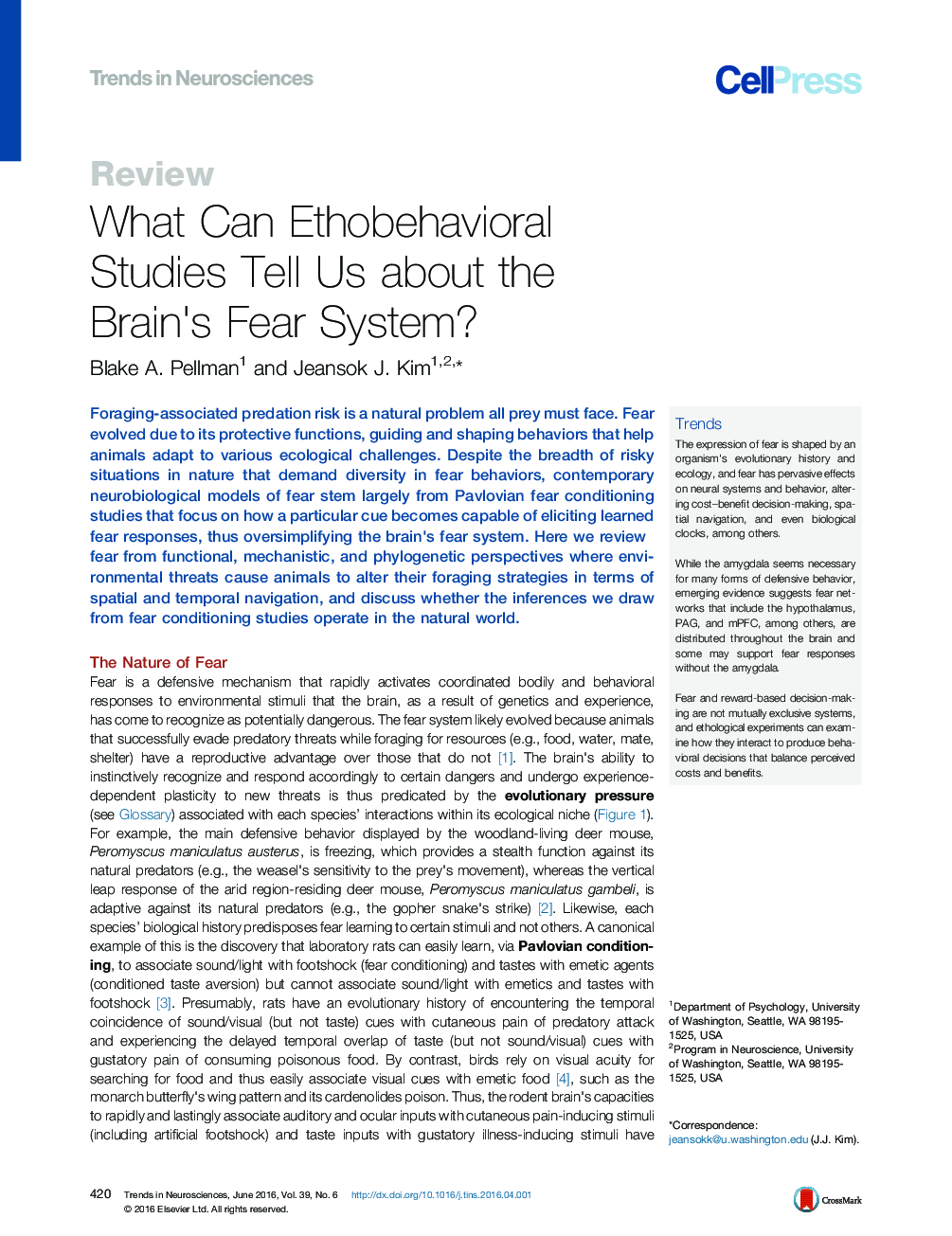| Article ID | Journal | Published Year | Pages | File Type |
|---|---|---|---|---|
| 4354131 | Trends in Neurosciences | 2016 | 12 Pages |
Foraging-associated predation risk is a natural problem all prey must face. Fear evolved due to its protective functions, guiding and shaping behaviors that help animals adapt to various ecological challenges. Despite the breadth of risky situations in nature that demand diversity in fear behaviors, contemporary neurobiological models of fear stem largely from Pavlovian fear conditioning studies that focus on how a particular cue becomes capable of eliciting learned fear responses, thus oversimplifying the brain's fear system. Here we review fear from functional, mechanistic, and phylogenetic perspectives where environmental threats cause animals to alter their foraging strategies in terms of spatial and temporal navigation, and discuss whether the inferences we draw from fear conditioning studies operate in the natural world.
TrendsThe expression of fear is shaped by an organism's evolutionary history and ecology, and fear has pervasive effects on neural systems and behavior, altering cost–benefit decision-making, spatial navigation, and even biological clocks, among others.While the amygdala seems necessary for many forms of defensive behavior, emerging evidence suggests fear networks that include the hypothalamus, PAG, and mPFC, among others, are distributed throughout the brain and some may support fear responses without the amygdala.Fear and reward-based decision-making are not mutually exclusive systems, and ethological experiments can examine how they interact to produce behavioral decisions that balance perceived costs and benefits.
